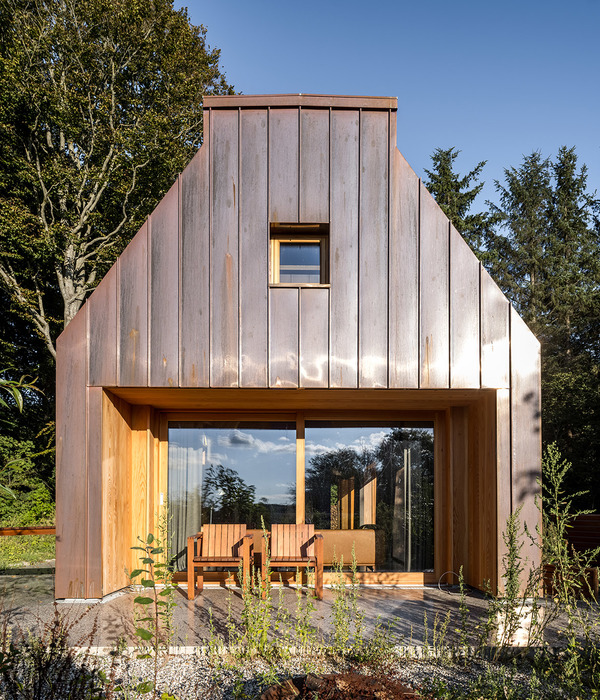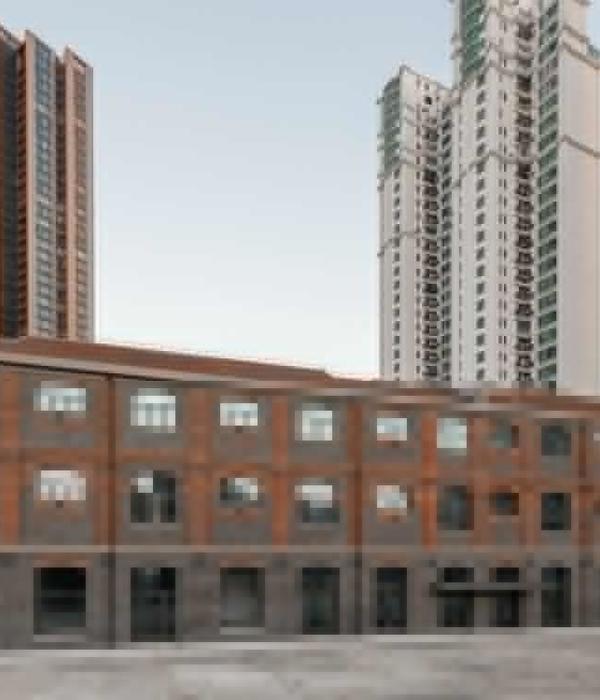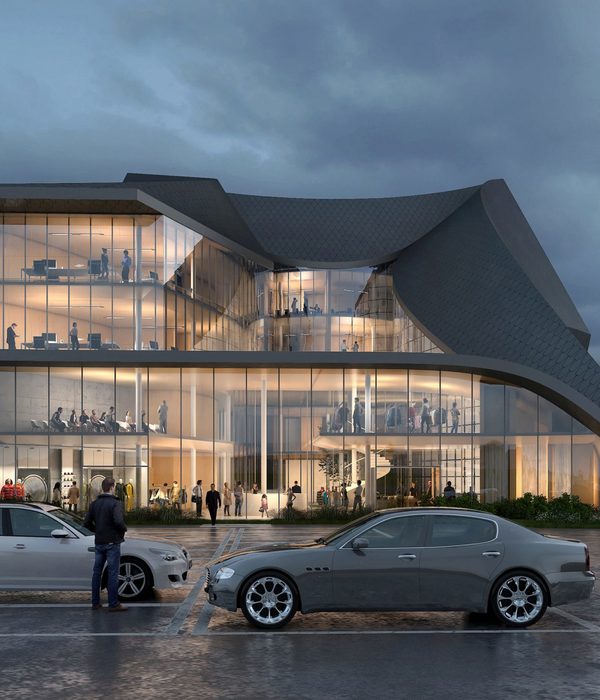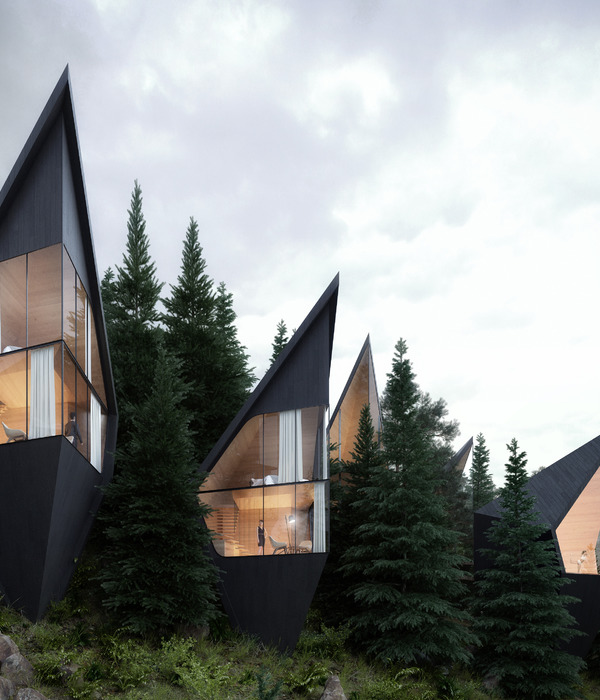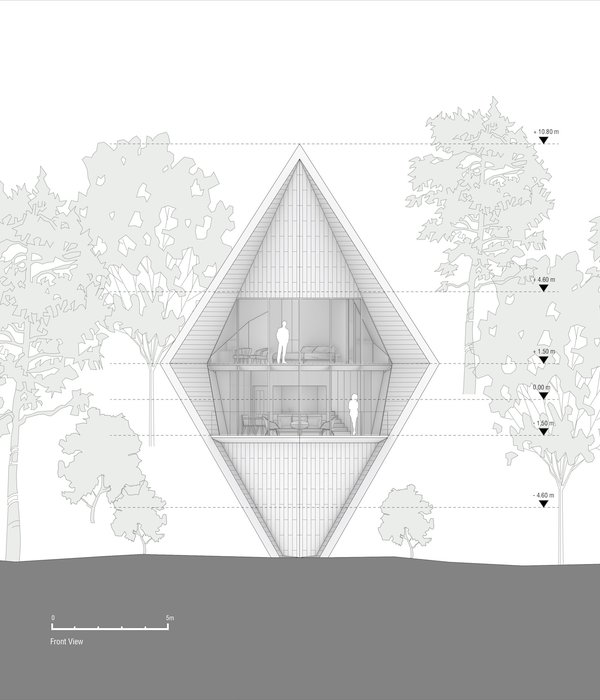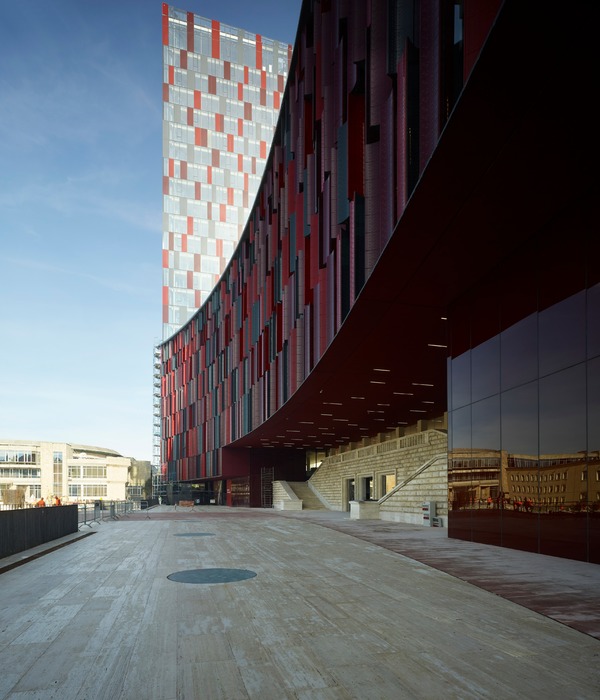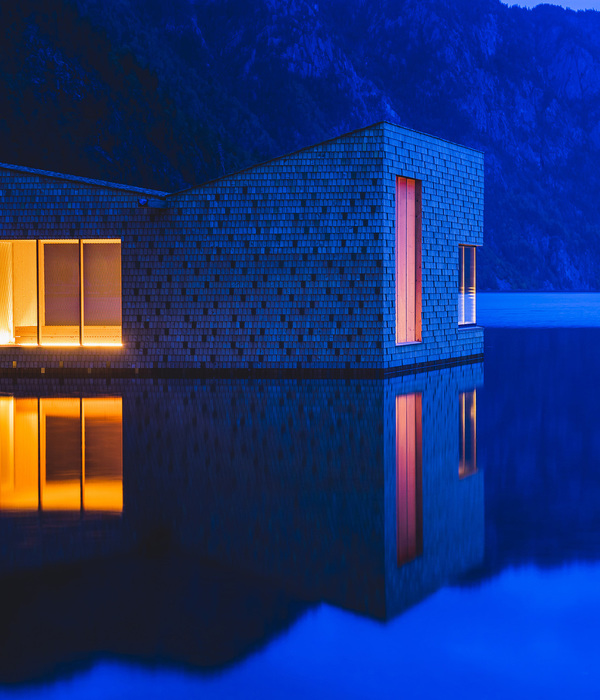Architects:Orgânica Arquitectura
Area:6000m²
Year:2021
Photographs:Francisco Nogueira
Architects In Charge:Orgânica Arquitectura - Paulo Serôdio Lopes
Collaborators:Marta Belém, Vítor Sá, João Cordeiro
Fire Protection:José Correia
Landscape:Cristina Correia
City:Lisboa
Country:Portugal
Text description provided by the architects. Sober and contained on the outside, the building hides an intense explosion of colors inside that challenges the senses.
The school is located in the south of Parque das Nações, where, since 2010, the Kindergarten and 1st Cycle classrooms have been installed.
For over 10 years, the population has been demanding the expansion of the school up to the 9th grade. This is, therefore, a project very much coveted by the community, which even signed petitions and several demonstrations calling for the school's construction to be completed. The second phase of the project, now completed, intended to expand the building in order to accommodate the following levels of education, adding six thousand square meters of built-up area.
The new building is a parallelepiped volume with three floors: the ground floor, facing the interior of the precinct where the teachers' work offices, support services for students, and unique functions of the school, such as the library and the informal area, are located. Leisure activities are linked to the cafeteria and cafeteria.
Floor level 0 houses the entrance and main atrium, the school's management offices and workrooms for students, teachers, and parents' association; informal and leisure areas, cafeterias including pre-school cafeteria, kitchen, and support spaces dedicated to non-teaching staff.
On the upper floors, Floors 1 and 2, there is a set of spaces for classrooms, art rooms, and laboratories, designed to provide good study conditions, meeting the need to facilitate the permanence of students and teachers in the educational establishments, outside scheduled class hours.
The new school is, therefore, an extensive monolithic body composed of three floors with a gallery that connects various interior ground floor spaces with exterior spaces. The entire school is organized in a way that classrooms, recreation, and circulation spaces, encourage the crossing of routinary routes and spaces for informal meetings of students and teachers. The objective was to think of the school as a place of multiple learning, sharing, and interactions between everyone.
Made up of three parts, the building is divided into:- an exterior part with a sober design that “holds” it to the earth with walls made of exposed brick, on which two floors are supported, surrounded by two visible concrete visors in front of the windows, for shading;- an upper crown that “touches” the sky;- a scheme of codes visible in the rhythm of the interior porticoes of columns and beams and in the impressive colors of the spaces' surfaces.
Because it is an urban school, its exterior conveys an idea of robustness, weight of matter, essentially monochromatic, with geometries, shapes, and the textures of the concrete and the rows of brick that let light and shadow transform throughout the day.
The power of color (and its total absence). In absolute contrast to the building's envelope, the interior is imprinted with color that expands throughout the school through a radical chromatic palette that also serves as orientation information and space organization. The colors, from absolute black to pure yellows, deep blues, reds, and greens cover walls, floors, and ceilings, introducing an element of novelty that, with the light, invites you to experience the spaces.
Stairs, hallways, lobby, library, cafeteria, music room, and art room are profusely colorful. Here, color is a tool for the individual perception of spaces, which allows students to discover its influence on the perception of dimension, distance, and the relationship between surfaces. This interaction with color is, at the same time, aesthetic, psychological, physiological, symbolic, and refers to our conscience, constituting a pedagogical process in itself.
"Schools started with a man under a tree who didn't know he was a teacher, sharing his ideas with other men who didn't know they were students." (Louis Kahn)
Project gallery
Project location
Address:Parque das Nações, Lisboa, Portugal
{{item.text_origin}}



